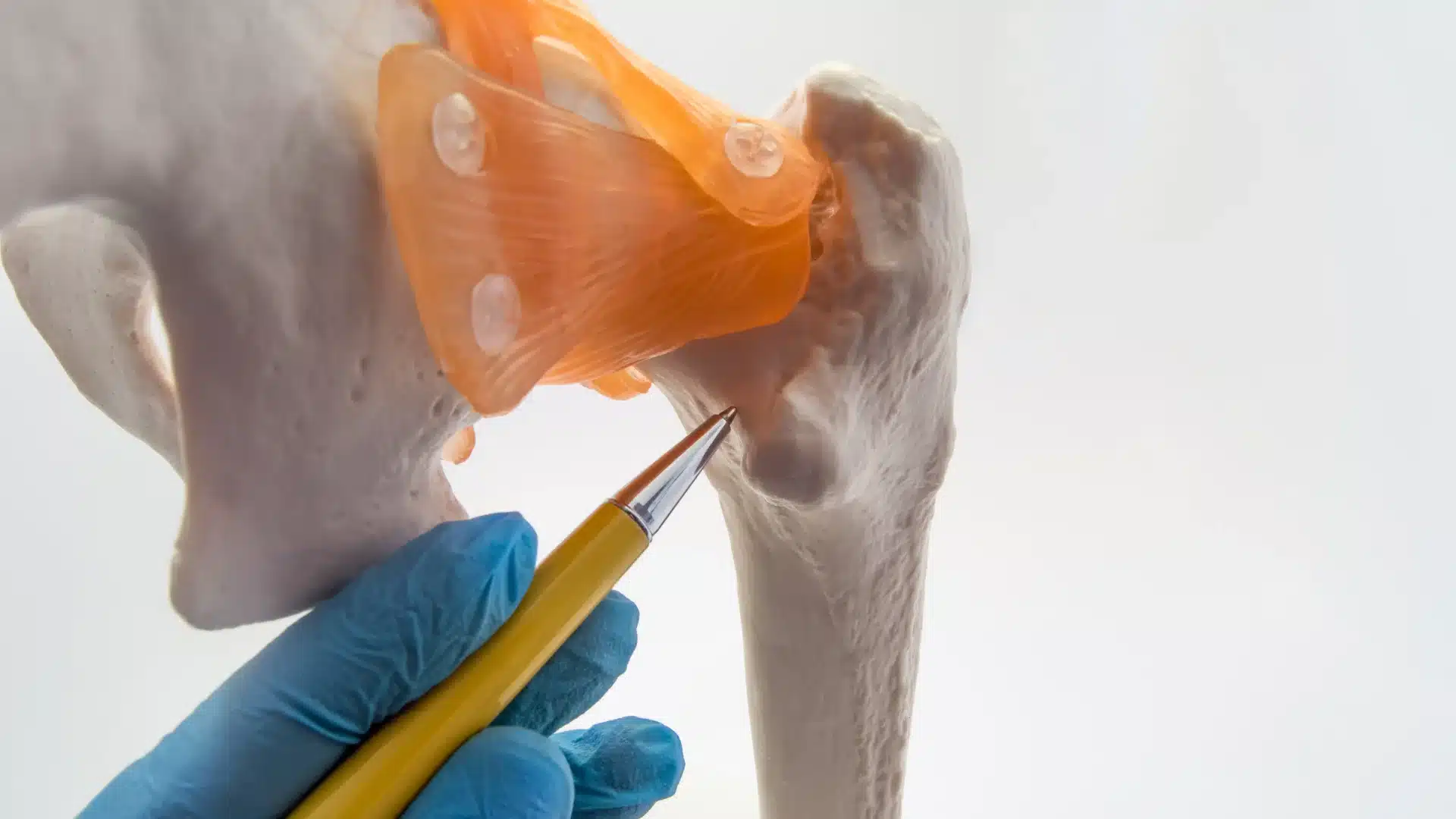Hip Fractures: Everything You Need to Know

Overview
Hip fracture is a serious issue, affecting older people. It’s important to know about these fractures considering their commonness, and the need to spot symptoms early. In India, hip fractures are a big health problem, and knowing the risks and treatments is vital.
They are a common cause for hip discomfort especially in the elderly. Falls and accidents can easily cause these. They might also go unnoticed which is a huge issue with serious consequences like hip joint destruction.
Introduction
Hip fractures can happen for many reasons, like osteoporosis, accidents, or falls. Knowing the risks and how to prevent them is critical. We will look into hip fractures, including causes, symptoms, treatments, and recovery.
The hip’s anatomy is important for understanding fractures. The hip joint has parts like the femoral head, neck, and shaft. These parts can break in different ways. Intertrochanteric fractures happen in the upper femur, and femoral neck fractures happen in the neck. Each type needs a specific treatment, like different surgeries.
Types of Hip Fractures
Intertrochanteric fractures
These occur in the upper part of femur specifically in the region between the greater and lesser trochanters. These fractures often occur due to falls or direct trauma and can significantly impact mobility.
Femoral neck fractures
They involve a break in the narrow area just below the ball of the hip joint, commonly referred to as the neck of the femur. This type of fracture is frequently associated with osteoporosis and can result from low-impact injuries, particularly in older adults.
Subtrochanteric fractures
Occur in the section of the femur just below the lesser trochanter. These fractures are typically more complex and can be the result of high-energy trauma or underlying conditions affecting bone density.

Symptoms
Spotting symptoms earlier is key for good treatment and recovery. A hip joint fracture can be very limiting. It’s important to know the signs and get medical help fast. Common signs include severe pain, trouble moving the hip, and a leg that seems shorter.
People can have different symptoms, from mild to severe. Some common signs of a hip joint fracture include:
- Pain in the hip or groin area
- Unable to tackle load on the left leg
- Shortening of the leg
- Swelling or bruising in the affected area
It’s important to notice these symptoms in yourself or a loved one as soon as possible. Knowing the correct signs helps start the recovery process. It helps people get back to moving freely and living independently.
Diagnosis
The first step is a physical checkup in order to understand and analyze your medical history and your 360-degree health. Here, a doctor will check the patient’s overall health, medical history, and the hip area. Next, imaging tests like a hip fracture X-ray confirm the diagnosis.
A hip fracture X-ray is often the first test. It helps determine the fracture’s location and severity. Sometimes, more tests, like CT scans or MRIs, are needed for a detailed view.
Just considering it as a hip fracture may result in problems in the near future, so specialists and doctors consider the patient’s symptoms, medical history, and test results. This helps them find the real cause and plan the best treatment accordingly. For example, an upper hip fracture may lead to avascular necrosis of the femoral head, a dangerous condition, which if found early, can be treated by regenerative therapy to preserve the hip joint and avoid replacement.
Treatment
Depending on the extent of damage, there may be various treatment options including surgery and non-surgical methods.
Surgical: These include a lot of options like open reduction and internal fixation, hemiarthroplasty, and total hip replacement. The choice depends on the fracture’s severity and location, and the patient’s health. Sometimes, patients need extra procedures like bone grafting or osteotomy.
Non-Surgical: For less severe hip fractures or specific patient conditions, non-surgical options can be explored. Treating hip fractures without surgery can be a possible option because it centers on handling the condition through conservative techniques. This involves hip fracture traction, which helps to line up and steady the bone, easing pain and discomfort.
Regenerative Therapy: To avoid replacement surgery for hip joint damage, you can explore SVF therapy. Get a free consultation from HipXpert to know more.
Physical Therapy: Along with traction, exercises for hip fractures play a crucial part in the non-surgical treatment strategy. These exercises are designed to maintain range of motion, strengthen surrounding muscles, and promote healing. A specialist will then customize an exercise program to suit the individual’s needs and abilities.
They are best when combined with lifestyle modifications and ongoing care. With proper guidance understanding every aspect is very you can check out our free consultation.

Recovery
Recovering from a hip fracture takes time, effort, and a good plan. Knowing how long it takes to get better is key. It usually takes months, sometimes up to a year or more.
It’s important to understand the recovery process well. This helps patients stick to their rehabilitation plans, for some, hip fracture recovery without surgery is possible, like for those with a hairline hip fracture treatment. The steps for getting better, including physical therapy and home care, will be explained. This ensures a smooth return to daily activities.
Timeline
The time it takes to recover from a hip fracture varies. It depends on the fracture type, severity, and the patient’s health and age. Patients usually see big improvements in the first few months. They continue to get better over the next year.
Preventing Complications
Recovering from a hip fracture needs careful attention to avoid complications. What causes death after hip fracture often comes from secondary issues, like infections or blood clots. To lower these risks, patients might wear a de-rotation boot for hip fractures to help the hip heal.
Watch for signs of complications, including increase in pain, redness, or swelling. If you notice these, get medical help right away. Taking early action can help avoid problems and aid in a full recovery.
Long-term Care and Lifestyle Modifications
A good nursing care plan for hip fractures helps people recover and become independent again. The hip bone fracture recovery time can vary, but with the right care and lifestyle changes, risks can be lowered. For those who had hip replacement surgery, following a detailed recovery plan is vital. Check out our recent article about how to maintain healthy nutrition for hip.
Takeaways
A hip fracture is a serious health concern that requires prompt medical attention and recognizing symptoms early on is critical for effective treatment. It can impact a person’s quality of life significantly. Consulting with a specialist is crucial for the best treatment. Recovery and rehabilitation also plays a critical role in regaining mobility and independence after a hip fracture.
FAQs About Hip Fractures
What are the primary risk factors and causes of hip fractures?
Falls among older adults stands out as a major cause. Osteoporosis, which weakens bones is also a contributing factor. Age, gender, and specific health issues also influence the risk.
What are the typical symptoms of a hip fracture?
Hip fracture symptoms include intense pain in the hip or groin area. The leg may appear shorter or turn outward. These indicators suggest you need immediate medical attention.
How much does hip fracture surgery cost in India?
The cost of hip fracture surgery in India varies depending on the surgery type, hospital, and location. On average, it can cost between ₹1.5 lakhs to ₹ 5 lakhs or more.
What is the recovery process like after a hip fracture?
Recovering from a hip fracture takes time. It involves physical therapy, exercises, and home care. It usually means slowly getting back to moving and strengthening over months.
